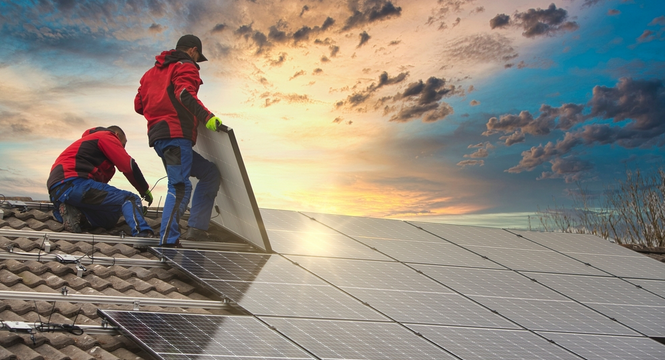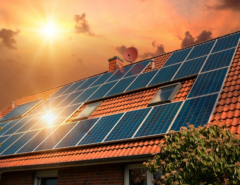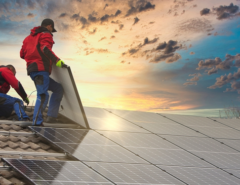In 2023, 375 GW of solar PV cells were installed worldwide, which accounted for nearly three-quarters of all new renewable energy installations! According to the International Energy Agency (IEA), it is estimated that by 2030, the world will generate 8,255 TWh of power from solar PV alone (just for comparison, that’s more than four times as much total electricity generated by India in FY 2022-23). But how do photovoltaic energy panels even work? Let’s get into the science of the photovoltaic effect.
The photovoltaic effect was observed by French physicist Edmond Becquerel in 1839. He noticed that when gold or platinum are immersed in certain chemical solutions and exposed to sunlight, an electric current is produced. In 1888, the Russian physicist Alexander Stoletov went on to produce a fully functional solid-state solar cell. Although it was inefficient, it was still more practical than Becquerel’s cell made with liquid chemicals. Stoletov’s cell is essentially the ancestor of today’s silicon photovoltaic energy panels.
When photons – like those in sunlight – strike the surface of a solar panel, they excite electrons in the material and set them free. The panel is designed to push these electrons to the surface of the cell. Since electrons are negatively charged, there is now an imbalance in charge between the front and back of the silicon cell, creating a voltage potential. The more light falls on the cell, the faster these electrons can be conducted. A negative terminal at the cell surface and a positive terminal on the cell’s underside can then be connected to an electrical device, powering it with photovoltaic renewable energy.
Solar PV cells generate direct current (DC), meaning that in today’s world, it is not possible to connect them directly to the grid or electronics. The power is first run through an inverter which creates alternating current (AC). Then, it can be supplied safely to the grid to power homes and factories.
Increasing efficiency remains crucial in the field of photovoltaics. Although we have come a long way from the first PV cells, which struggled to convert 1% of sunlight to usable energy, modern solar power plants still use modules with an efficiency of just 20-25%. It means that in addition to PV cells, large investments are made in software and automation that can increase the plant’s efficiency by even 1 or 2%. IoT sensors are placed on every panel and inverter, constantly gathering data on irradiation, temperature, output, etc. Machine learning software controls the operations of a plant, using this data to make timely decisions on changing panel angles, performing preventive maintenance, and more. After all, if a large photovoltaic renewable energy project can power 100,000 homes at 20% efficiency, increasing this to 22% would mean that an extra 10,000 homes are powered at no added cost.
The cost of silicon PV cells rapidly dropped between 2010 and 2020, falling by a total of over 90% as production increased and new cost-cutting techniques were invented. Now, nearly anyone can afford a solar PV installation on their home or factory rooftop, helping them cut down on their power bills while also reducing CO2 emissions in the region. For the same reason, most government buildings, railway stations, offices and warehouses are covered in photovoltaic renewable energy cells nowadays.
New research in solar cells is always ongoing. The last five years have yielded some fantastic breakthroughs. In 2022, the Fraunhofer Institute in Germany developed a multi-junction solar cell with a 47% efficiency. Another German institute, Helmholtz-Zentrum in Berlin, developed a perovskite cell with a 32.5% efficiency.
Perovskites are being given more attention than any other upcoming solar technology – simply due to their sheer potential to boost the efficiency of existing silicon PV. A perovskite is a crystalline layer that can be coated onto a silicon panel for immediate gains in efficiency. Their current limitation is that they degrade too fast to be installed commercially. If this barrier is overcome, we could potentially boost the power generation of existing solar plants at a nominal charge.




